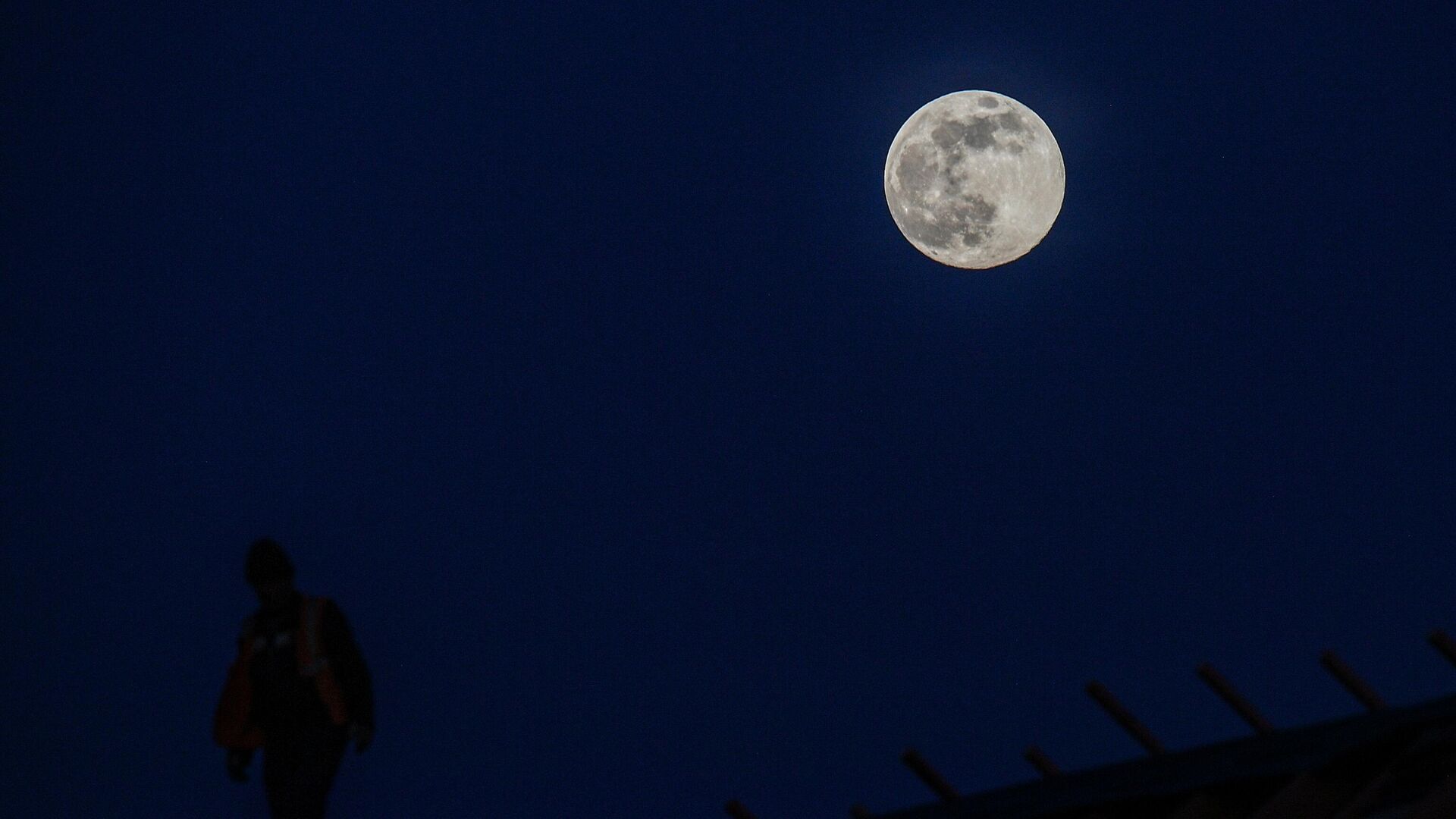https://sputniknews.in/20230827/chandrayaan-3-sends-first-ever-data-on-temperature-at-moons-south-pole-3863332.html
Chandrayaan-3 Sends First-Ever Data on Temperature at Moon's South Pole
Chandrayaan-3 Sends First-Ever Data on Temperature at Moon's South Pole
Sputnik India
India’s Chandrayaan 3 lunar exploration mission has sent back the “first-ever” data set giving a detail of temperature variations at Moon’s South Pole, the Indian Space and Research Organization (ISRO) said.
2023-08-27T18:52+0530
2023-08-27T18:52+0530
2023-08-27T18:52+0530
science & tech
science & tech
narendra modi
moon
india
bengaluru
indian space research organisation (isro)
chandrayaan
lunar soil samples
china
https://cdn1.img.sputniknews.in/img/07e7/08/13/3708956_0:0:3072:1728_1920x0_80_0_0_58c05efb1b0abc44f4b0084d420b15cd.jpg
India’s Chandrayaan-3 lunar exploration mission has sent back the “first-ever” data set giving a detail of temperature variations at Moon’s south pole, the Indian Space and Research Organization (ISRO) said in a statement on Sunday.The ISRO said that the ChaSTE payload "measures the temperature profile of the lunar topsoil around the pole to understand the thermal behaviour of the moon's surface."The lunar mission comprises the Vikram lander, the Pragyan rover, and the propulsion module. All three of them have payloads for the purpose of carrying out observations and experiments on the lunar surface, according to the ISRO.The Vikram lander has two other payloads called Instrument for Lunar Seismic Activity (ILSA) and RAMBHA-LP (Langmuir Probe), the ISRO said.Besides the payloads on board the Vikram lander, the lunar mission also comprises two payloads on the Pragyan rover, which rolled down from the lander last week. The ISRO has said that the rover will study the Moon's surface for one "lunar day" (about 14 earth days).The ISRO said that all the payloads were activated on 24 August, a day after the lunar mission touched down on the Moon.Two of Three Objectives of Chandrayaan-3 AccomplishedAccording to ISRO, the Indian lunar mission has three objectives—demonstrating a “safe and soft landing” on the lunar surface, mobbing a rover around the Moon, and conducting “in-situ scientific experiments”.Chandrayaan-3 touched down near the Moon’s south pole on 23 August, making India the fourth nation in the history of mankind to land a mission on the lunar surface after Russia, the US, and China.The landing of Chandrayaan-3 on the lunar surface also marks the first successful instance of a human mission landing near the Moon's south pole.
https://sputniknews.in/20230824/chandrayaan-3-pragyan-rover-takes-moon-walk-isro-reveals-3795809.html
moon
india
bengaluru
china
russia
us
Sputnik India
feedback.hindi@sputniknews.com
+74956456601
MIA „Rossiya Segodnya“
2023
Dhairya Maheshwari
https://cdn1.img.sputniknews.in/img/07e6/0c/13/138962_0:0:641:640_100x100_80_0_0_2cb44360dbcdf6d84bf4b299cd045917.jpg
Dhairya Maheshwari
https://cdn1.img.sputniknews.in/img/07e6/0c/13/138962_0:0:641:640_100x100_80_0_0_2cb44360dbcdf6d84bf4b299cd045917.jpg
News
en_IN
Sputnik India
feedback.hindi@sputniknews.com
+74956456601
MIA „Rossiya Segodnya“
Sputnik India
feedback.hindi@sputniknews.com
+74956456601
MIA „Rossiya Segodnya“
Dhairya Maheshwari
https://cdn1.img.sputniknews.in/img/07e6/0c/13/138962_0:0:641:640_100x100_80_0_0_2cb44360dbcdf6d84bf4b299cd045917.jpg
chandrayaan 3 landing, chandrayaan 3 landing date, chandrayaan 3 launch date, chandrayaan 3 news, vikram lander, vikram lander photo, pragyan rover, pragyan rover video, pragyan rover weight, pragyan rover news, pragyan rover life, moon south pole images, moon south pole water, modi, modi news, modi speech, modi isro
chandrayaan 3 landing, chandrayaan 3 landing date, chandrayaan 3 launch date, chandrayaan 3 news, vikram lander, vikram lander photo, pragyan rover, pragyan rover video, pragyan rover weight, pragyan rover news, pragyan rover life, moon south pole images, moon south pole water, modi, modi news, modi speech, modi isro
Chandrayaan-3 Sends First-Ever Data on Temperature at Moon's South Pole
Addressing ISRO scientists in Bengaluru on Saturday, Prime Minister Narendra Modi described the touchdown of Chandrayaan-3 on the Moon as "one of the most inspiring moments of the century".
India’s Chandrayaan-3 lunar exploration mission has sent back the “first-ever” data set giving a detail of temperature variations at Moon’s south pole, the Indian Space and Research Organization (ISRO) said in a statement on Sunday.
The temperatures near the Moon’s south pole were recorded by ChaSTE (Chandra's Surface Thermophysical Experiment), a payload on board the Vikram lander.
The ISRO said that the ChaSTE payload "measures the temperature profile of the lunar topsoil around the pole to understand the thermal behaviour of the moon's surface."
“It has a temperature probe equipped with a controlled penetration mechanism capable of reaching a depth of 10 cm beneath the surface. The probe is fitted with 10 individual temperature sensors”, the Indian space agency said.
The graph presented by the ISRO showed that the temperature increase was directly proportional to the increase in depth.
The lunar mission comprises the Vikram lander, the Pragyan rover, and the propulsion module. All three of them have payloads for the purpose of carrying out observations and experiments on the lunar surface, according to the ISRO.
The Vikram lander has two other payloads called Instrument for Lunar Seismic Activity (ILSA) and RAMBHA-LP (Langmuir Probe), the ISRO said.
Besides the payloads on board the Vikram lander, the lunar mission also comprises two payloads on the Pragyan rover, which rolled down from the lander last week. The ISRO has said that the rover will study the Moon's surface for one "lunar day" (about 14 earth days).
The ISRO has said that these payloads include LIBS (Laser-Induced Breakdown Spectroscope) and APXS (Alpha Particle X-ray Spectrometer).
The propulsion module meanwhile has the Spectro-polarimetry of HAbitable Planet Earth (SHAPE) payload.
The ISRO said that all the payloads were activated on 24 August, a day after the lunar mission touched down on the Moon.
Two of Three Objectives of Chandrayaan-3 Accomplished
According to ISRO, the
Indian lunar mission has three objectives—demonstrating a “safe and soft landing” on the lunar surface, mobbing a rover around the Moon, and conducting “in-situ scientific experiments”.
A mission update posted by the ISRO on Saturday noted that the first two of the mission's goals had been “accomplished”, while the conducting of scientific experiments through payloads was “underway”.
Chandrayaan-3 touched down near the
Moon’s south pole on 23 August, making India the fourth nation in the history of mankind to land a mission on the lunar surface after Russia, the US, and China.
The landing of Chandrayaan-3 on the lunar surface also marks the first successful instance of a human mission landing near the Moon's south pole.



